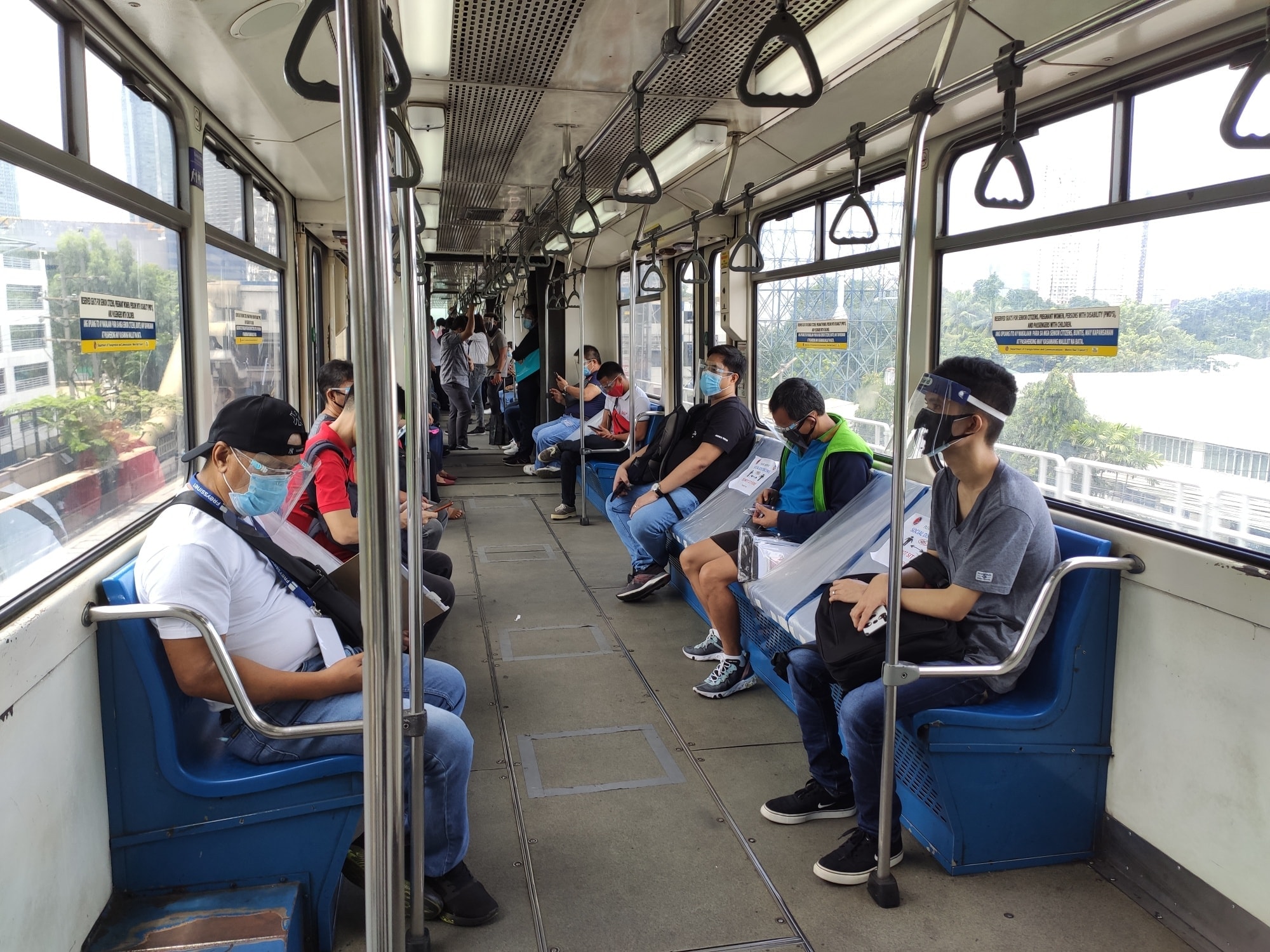The World Health Organization has said that physical distancing—maintaining a space of at least one meter from another person—is necessary to avoid getting infected with the coronavirus. However, the Duterte government said today that the Philippines will gradually veer away from that and reduce the physical distancing inside public transport in order to accommodate more passengers.
The Department of Transport said that starting Sept. 14, physical distancing will be reduced inside all public transport to 0.75 meters. This will be reduced to 0.5 meters after two weeks, then to 0.3 meters after 14 more days. The department said that with the mandatory wearing of face shields and face masks, it was supposedly safe to reduce the distance between passengers.
Read: Cover Up: Public transport commuters required to wear face shields from Aug. 15
Reduced physical distancing means that vehicles including buses will be able to accommodate standing commuters, the Transport Department said.
“As for airlines and passenger ferries, optimizing the physical distance between passengers will mean more passengers being allowed to enter airports and seaports,” it added.
Transport Secretary Arthur Tugade said this proposal, approved by the government’s coronavirus task force, was necessary to boost the “carrying capacity of the various public transport modes” as Metro Manila and neighboring areas expect more people to return to work and numerous businesses to reopen. Thousands of enterprises were forced to shut down due to the government’s mandatory quarantine, leaving millions of Filipinos displaced in the process.
The government’s COVID-19 response Chief Implementer Carlito Galvez, Jr. supported the move, saying that reducing the distance inside public vehicles “will help soothe the transportation woes of Filipino commuters. With public transportation, there is [a] faster recovery of lives and livelihoods as we push forward under the new normal.”
The Philippines has the highest number of COVID-19 cases in Southeast Asia, with 248,947 cases recorded as of yesterday, including 186,058 recoveries and 4,066 deaths.





Reader Interactions